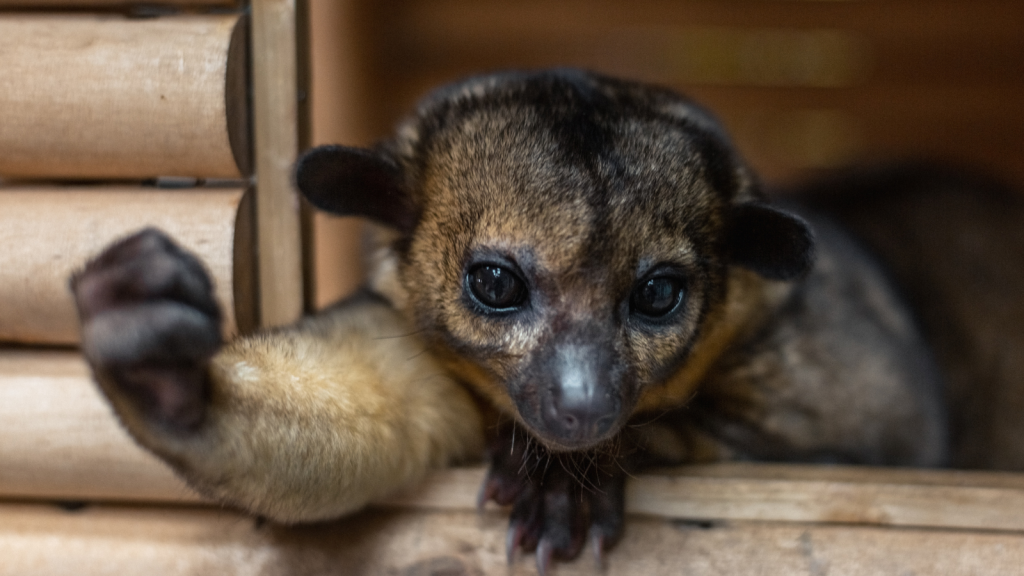Deep in the lush rainforests of Central and South America, a fascinating creature swings through the treetops under cover of darkness. The kinkajou, with its big eyes and nimble paws, is a master of nighttime acrobatics. These furry mammals are often mistaken for primates or rodents, but they’re actually related to raccoons and coatis. Despite their cute appearance, kinkajou are still relatively unknown to many. Let’s uncover some surprising facts about these nocturnal forest dwellers that might just make you fall in love with them.
Their Tongue Is Longer Than Their Face

Kinkajous have an incredibly long tongue that can stretch up to 5 inches! This remarkable feature helps them reach deep into flowers and crevices to lap up nectar and scoop out insects. Their tongue is so long that when retracted, it actually wraps around the back of their skull inside their head. This unique adaptation allows kinkajous to access food sources that many other animals can’t reach, giving them a competitive edge in the rainforest ecosystem.
They’re Called “Honey Bears” But Don’t Eat Honey

Despite their nickname “honey bears,” kinkajous don’t actually eat honey. This moniker comes from their love of sweet foods, particularly fruit and nectar. They do occasionally raid beehives, but it’s for the bee larvae inside, not the honey. Their sweet tooth is so strong that they can consume up to half their body weight in fruit in a single night!
Kinkajous Can Turn Their Feet Backwards

These agile climbers have a neat trick up their sleeves – or rather, in their feet. Kinkajous can rotate their hind feet 180 degrees, allowing them to run backwards just as easily as forwards. This ability helps them navigate tree branches with incredible ease and speed. Their flexible ankles also enable them to hang upside down from branches, using their hind feet as hooks while their front paws are free to gather food.
They Use Their Tail Like An Extra Hand
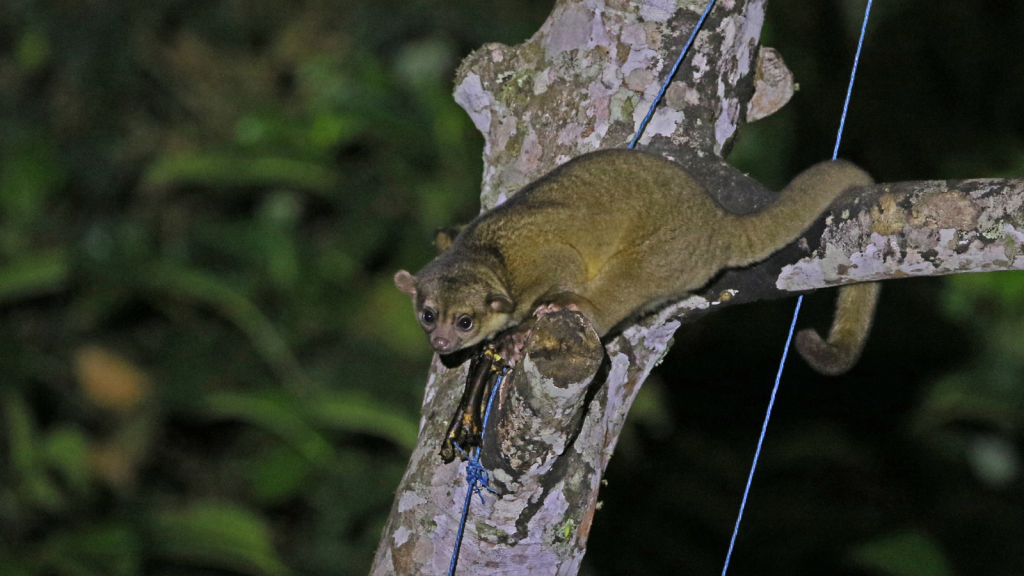
The kinkajou’s tail is a marvel of evolution. It’s prehensile, meaning they can use it to grasp and hold onto things. They often wrap their tails around branches for support while sleeping or reaching for food, effectively giving them a fifth limb to work with. The tail is so strong and dexterous that a kinkajou can support its entire body weight with it, freeing up all four paws for other tasks.
Kinkajous Are Mostly Frugivores
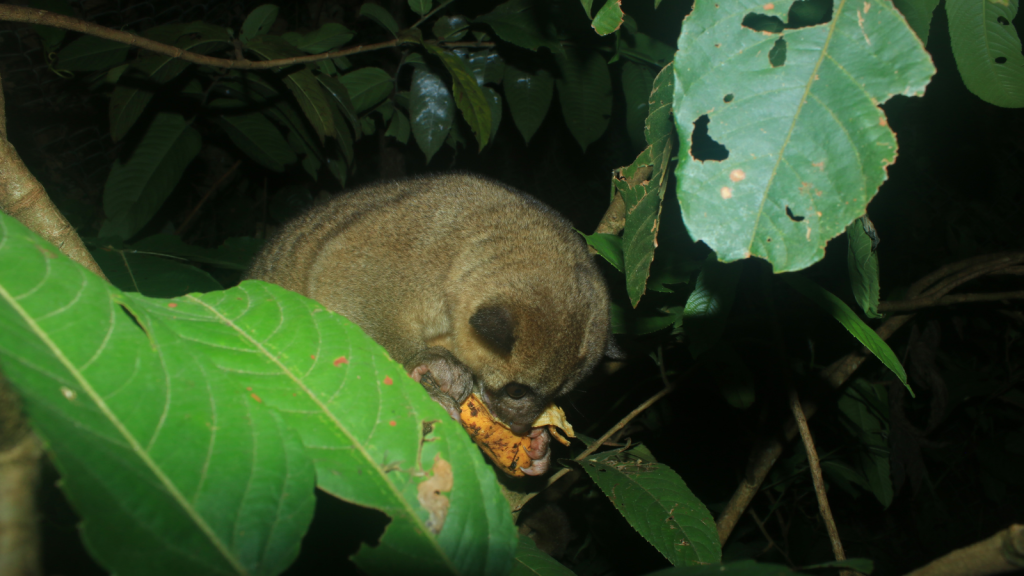
While they do enjoy the occasional insect or egg, kinkajous primarily eat fruit. In fact, up to 90% of their diet can consist of fruit. This makes them important seed dispersers in their rainforest homes, as the seeds pass through their digestive system unharmed and are deposited far from the parent tree. Their fruit-heavy diet also means they play a crucial role in maintaining the biodiversity of their forest habitats.
They Have a Built-in Comb
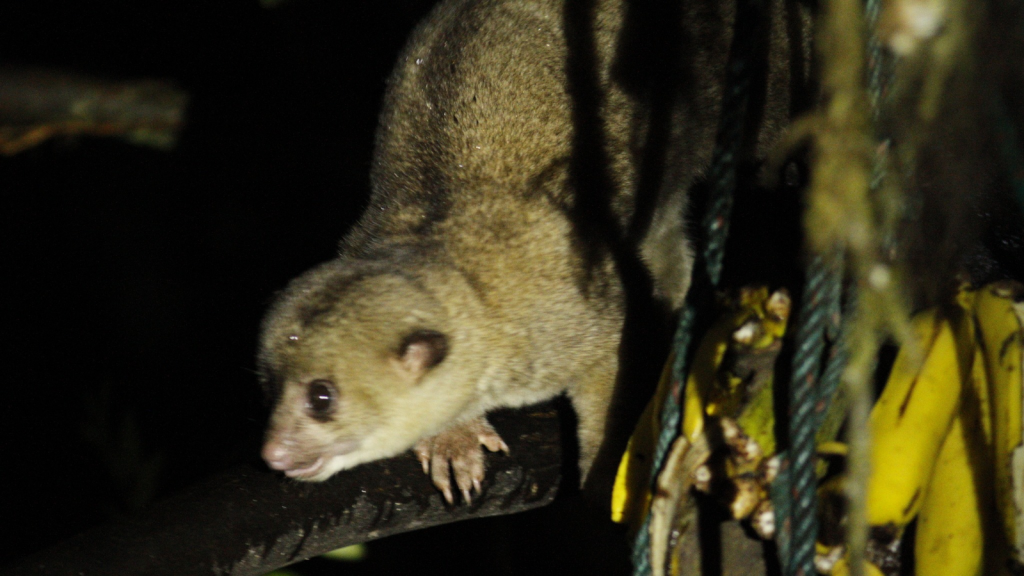
Kinkajous sport a unique feature on their paws – a specialized claw that acts like a comb. This grooming claw helps them keep their thick fur clean and free of parasites. It’s especially useful for reaching those tricky spots behind the ears and under the chin. This adaptation is particularly important for a nocturnal animal that needs to stay quiet while grooming to avoid attracting predators.
Kinkajous Are Mostly Silent
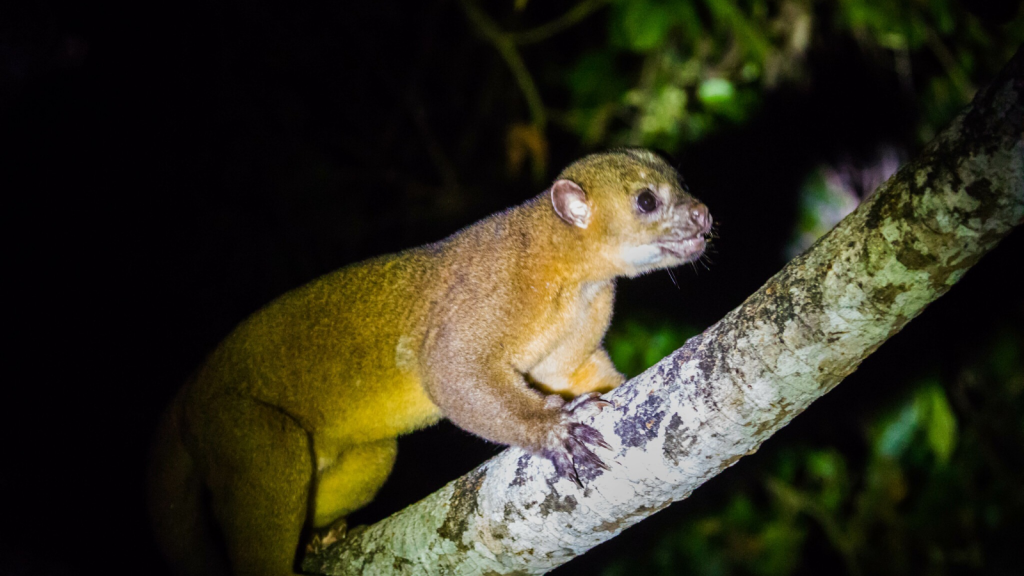
Unlike many nocturnal animals, kinkajous are surprisingly quiet. They communicate mainly through soft chirps, whistles, and barks. However, when threatened, they can produce a surprisingly loud screech that sounds almost bird-like. Their generally quiet nature helps them avoid detection by predators and allows them to sneak up on insects they might want to eat.
They Have Poor Eyesight But A Keen Sense Of Smell
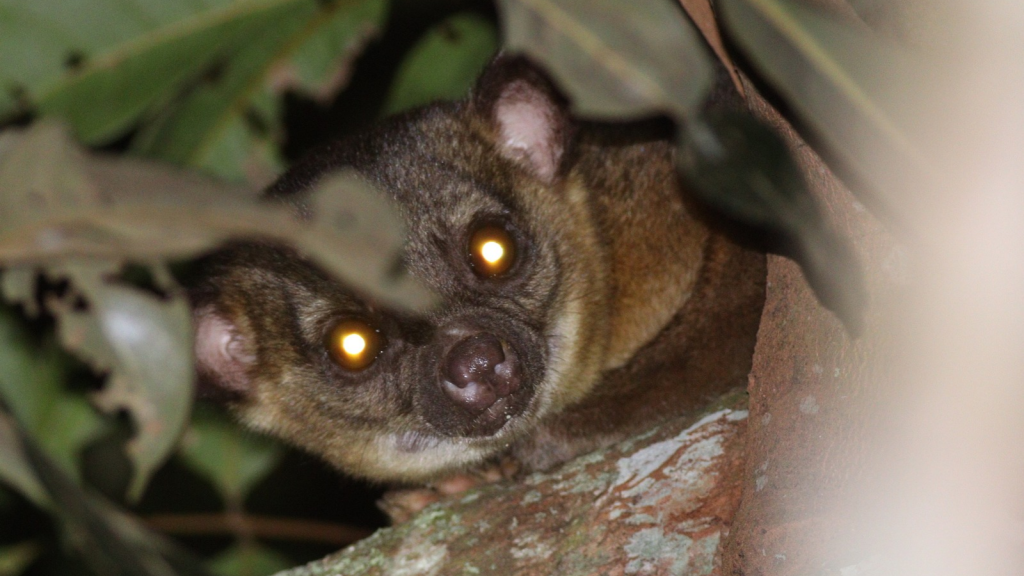
Despite their large, expressive eyes, kinkajous don’t have great vision. Instead, they rely heavily on their excellent sense of smell to navigate and find food in the dark forest canopy. Their noses are so sensitive they can smell ripe fruit from quite a distance away. To complement their keen sense of smell, kinkajous also have sensitive whiskers that help them navigate through the dark and sense nearby objects.
Kinkajous Are Social Sleepers

During the day, when kinkajous sleep, they often cuddle up with others in their group. They’ll pile into tree hollows or huddle together on branches, forming cosy sleeping clusters of two to five individuals. This behaviour helps them stay warm and bond with their group members. Interestingly, while they sleep together, kinkajous typically forage alone at night, only coming together again at dawn.
They Can Live For Over 20 Years In Captivity
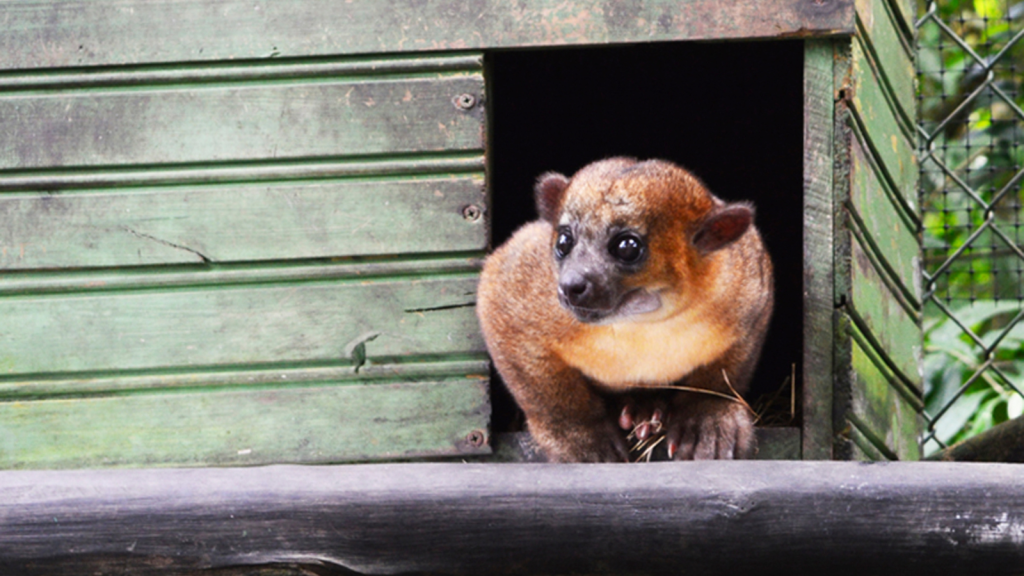
While their lifespan in the wild is typically shorter due to predators and environmental challenges, kinkajous can live for more than two decades in captivity. The oldest recorded kinkajou lived to be 41 years old, showing just how hardy these little creatures can be. This longevity makes them one of the longer-lived members of the Procyonidae family, outliving many of their raccoon and coati cousins.
Kinkajous Have A Special Ankle Joint
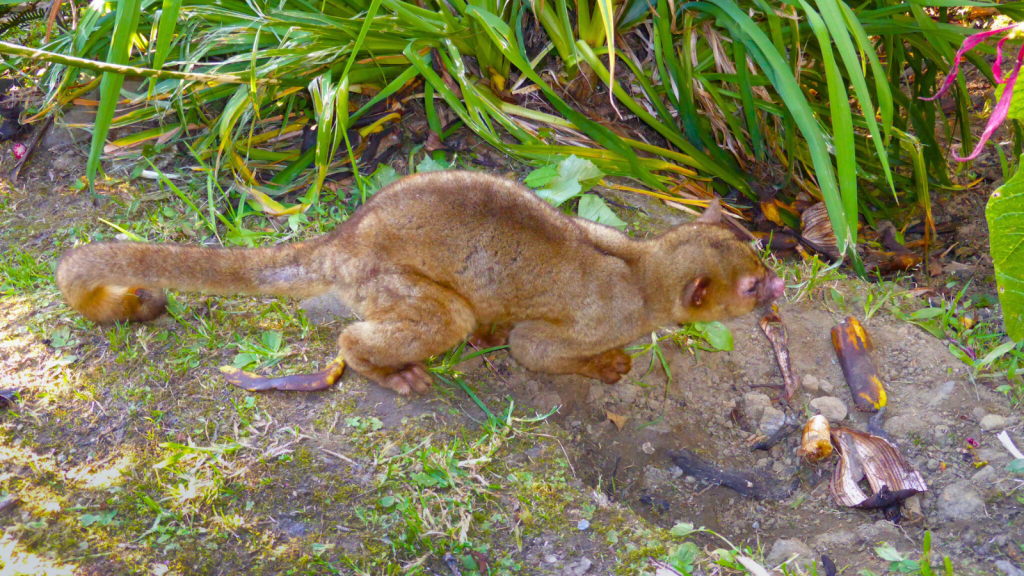
To aid in their acrobatic lifestyle, kinkajous have a unique ankle joint that can rotate 180 degrees. This allows them to hang from branches by their back feet, leaving their front paws free to gather food or groom themselves. It’s a perfect adaptation for life in the treetops. This extraordinary flexibility, combined with their prehensile tail, makes kinkajous some of the most agile tree-dwellers in the rainforest.
They’re Closely Related To The Olingo

While often mistaken for monkeys, kinkajous are actually part of the family Procyonidae, which includes raccoons and coatis. Their closest living relative, however, is the olingo – another nocturnal, tree-dwelling mammal found in Central and South American rainforests. Despite their similarities, kinkajous can be distinguished from olingos by their longer tails and more rounded ears.
Becky is a fervent wildlife enthusiast and pet care expert with a diploma in canine nutrition. Her love for animals stretches beyond the domestic, embracing the wild tapestry of global fauna. With over a decade of experience in animal welfare, Becky lends her expertise to OutlandishOwl through insightful articles, captivating wildlife information, and invaluable guidance on pet nutrition. Her work embodies a deep commitment to understanding the intricate lives of animals and a passion for educating others on sustaining natural habitats. Becky's hands-on conservation efforts and her knack for translating complex dietary science into practical pet feeding tips make her an indispensable voice for creatures great and small.

